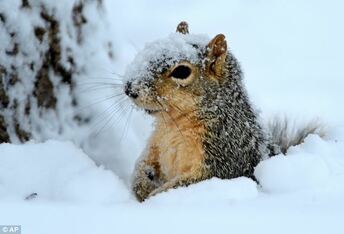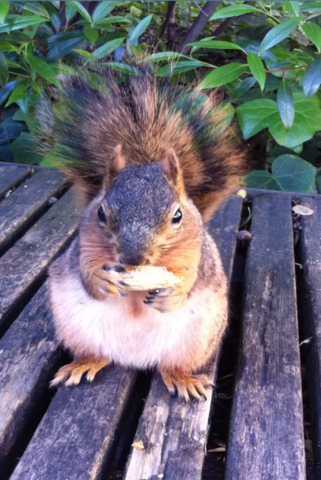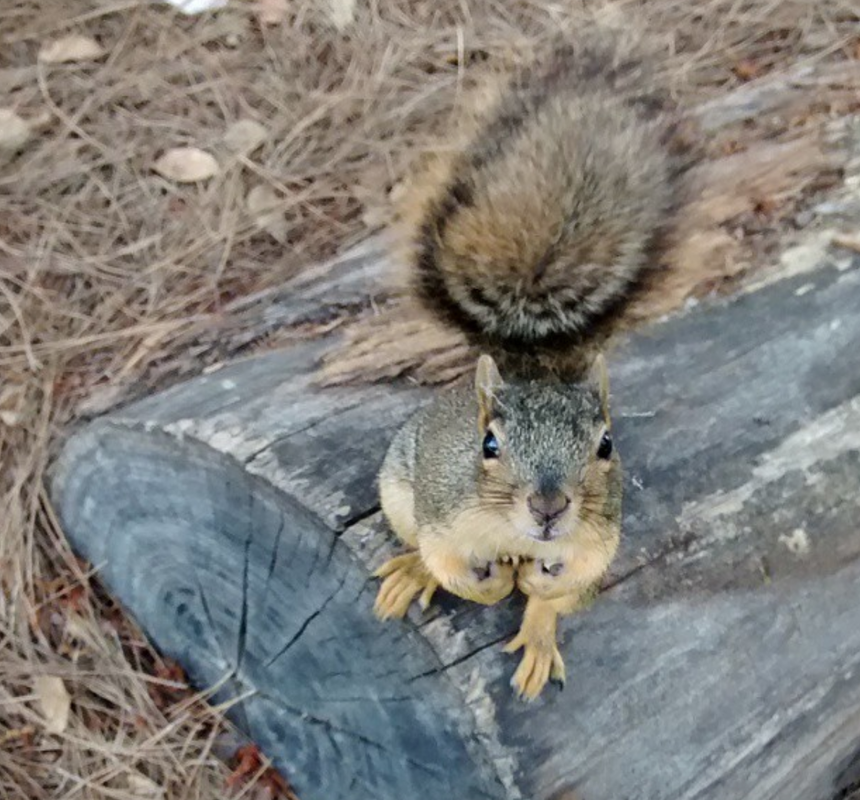|
Today is Squirrel Appreciation Day! 🐿💕With over 200 species all possessing their own unique squirrel super powers, there is defiantly a lot to appreciate and learn about these cute and sometimes mischievous rodents.
Digital editor Katherine Wu at PBS NOVA interviewed me and other professional squirrel gazers 🐿👀 to narrow down 6 reasons we should all be in awe of these often underestimated rodents. Check out the article here: www.pbs.org/wgbh/nova/article/six-snippets-squirrel-science Winter is here! This means that my favorite eastern fox squirrels 🐿are facing the biggest problem tree squirrels face all year- food shortage. In many places it is raining 🌧, snowing ❄️, or just plain freezing ☃️outside. These are not ideal conditions for trees 🌲to be producing nuts and seeds 🌰. Most tree squirrels do not hibernate and have to feed themselves throughout the winter when there is very little food in the natural environment.  Not to worry! Squirrels have been preparing to face this challenge all year long! 🐿🏋️♀️In the fall when nuts and seeds are most abundant in the environment squirrels are hard at work creating large hoards of food. It is estimated that eastern fox squirrels can store up between 3,000 and 10,000 nuts per season! Squirrels then rely on the food they stored in the fall to survive the winter 🐿❄️🌰. The food squirrels store is so valuable to them in the winter they do not want to just bury any nut. Squirrels want to ensure they stash away only the best nuts! 🏆🌰To do this eastern fox squirrels have worked out a two-step nut evaluation processes. Step One: Paw Manipulation When a squirrel comes across an a nut still in the shell the first thing they may do when considering whether or not to store it way for later is a ‘paw manipulation’ or ‘paw maneuver’. The squirrel will rotate the nut in its front paws several times.🌰🐾 Rotating the nut between their paws allows them to feel for any cracks or blemishes in the shell. A damaged shell may mean that the item is infested by a bug 🐜 or will rot 🤢quickly once placed underground and therefore not be edible by the time winter rolls around. Handling the food in this way also helps the squirrel either prepare to place the nut in its mouth to carry out step two of the assessment process, the head flick, or to begin eating the item. Step Two: The Head FlickThe final test the nut has to pass before being stored is the head flick. Once the squirrel has used the paw manipulation maneuver to situate the food in its mouth it will then perform a quick jerking motion with its head. This causes the nut inside the shell to move and bounce off the inner walls of the shell. By flicking its head and causing the nut inside the shell to move the squirrel is able to double check that there is actually something inside the shell and to get a rough estimate of the item’s weight. ⚖️🥜 The head flick is extremely helpful when it comes to making sure only the best quality food is being stored for the winter. 🌰🏆❄️After all the work it takes to bury a nut for the future it would be a major bummer if it turned out there was no actual food inside the shell or only a really tiny morsel! Watch These Assessment Behaviors in Action!(Preston & Jacobs, 2009) |
Proudly powered by Weebly


 RSS Feed
RSS Feed